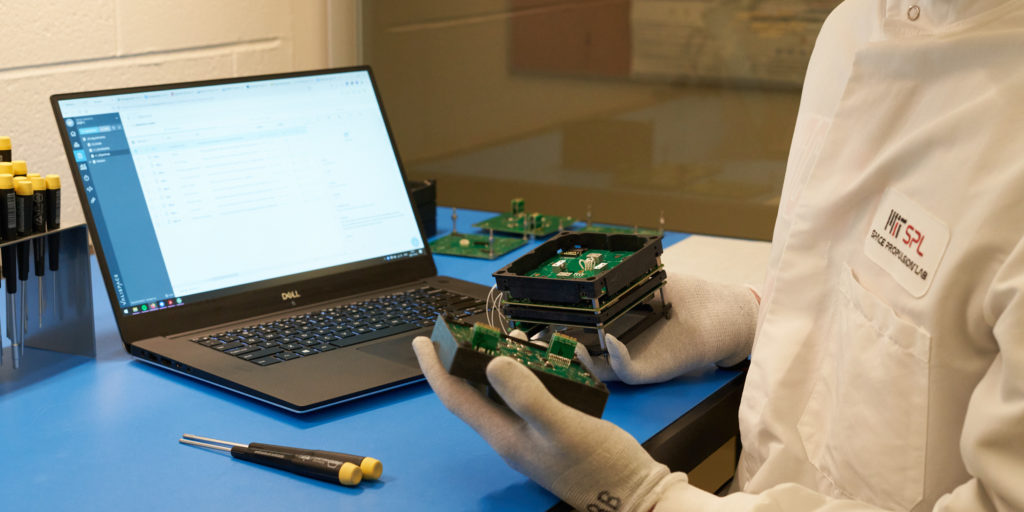Students from all over the world are using Valispace to manage their engineering data.
Next on ValiStudents we hear from STEP-1, an engineering team from MIT in Boston that are pioneering a new propulsion technology for deep space CubeSat exploration 🛰
Introduction
The Staged Electrospray Pathfinder 1 (STEP-1) is a 3U CubeSat in development at the MIT Space Propulsion Laboratory by a team of graduate and undergraduate students. With this mission we are developing and demonstrating a new form of propulsion technology which can provide the performance required to fly deep-space CubeSats in the near future.
The spacecraft
STEP-1 carries two payloads, a three-stage electrospray propulsion system and a deployable camera system. Electrospray thrusters are a form of highly compact and efficient electric propulsion which use ionic liquids accelerated by strong electric fields to generate thrust. Each propulsion stage houses eight thrusters which are individually controllable by a high-voltage power processing unit. When a stage runs out of fuel it is released to expose the fresh set of thrusters on the stage below and the mission continues. Demonstrating this staging system is a core aspect of STEP-1 which is why a camera payload is also included. Two cameras deploy on small booms from the satellite to record the propulsion system during staging for the evaluation of separation success and dynamics.
Development path
The STEP-1 mission was initially conceptualised at the end of 2019 and successful feasibility studies of the mission as well as critical technology developments for the payloads were conducted the following year. Based on this work, STEP-1 was selected by the NASA CubeSat Launch Initiative (CSLI) and the development to make the mission real kicked into high gear. The satellite bus and propulsion payloads are developed by a team of about five graduate students, and about ten undergraduate students are also involved in the project. In particular, the camera payload is managed and developed entirely by undergraduates to enable deep learning in both design and technical management for spaceflight.
[We] were intrigued by the impact it [Valispace] had in helping keep the systems engineering and management aspects of complex projects centralised and organised
Finding and using Valispace
Students of STEP-1 heard about Valispace when working on previous satellite projects and were intrigued by the impact it had in helping keep the systems engineering and management aspects of complex projects centralised and organised. In our present stage of development we are performing systems analysis and design work concurrently, and on top of that planning how the final system will be verified, tested, and operated. These activities are strongly linked, and using the Valispace platform mirrors that by keeping a shared and up-to-date source for the properties of the system and linking the development processes together. We especially look forward to using the Valispace platform during the integration and test stage of our project where this linked workflow ensures we don’t overlook any critical testing procedures.

